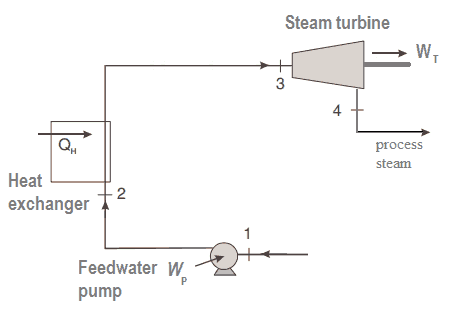Classification of Turbines – steam supply and exhaust conditions
Steam turbines may be classified into different categories depending on their purpose and working pressures. The industrial usage of a turbine influences the initial and final conditions of steam. For any steam turbine to operate, a pressure difference must exist between the steam supply and the exhaust.
This classification includes:
Back-pressure Steam Turbine

Back-pressure steam turbines or non-condensing turbines are most widely used for process steam applications. Steam is a principle energy source for many industrial processes. The popularity of process steam as an energy source stems from its many advantages, which include:
- high heat capacity,
- transportability
- low toxicity
The process steam can be produced by back-pressure steam turbines, which also generates mechanical work (or electrical energy). Back-pressure turbines expand the live steam supplied by the boiler to the pressure at which the steam is required for the process. The exhaust pressure is controlled by a regulating valve to suit the needs of the process steam pressure. Back-pressure turbines are commonly found at refineries, district heating units, pulp and paper plants, and desalination facilities where large amounts of low pressure process steam are needed. The electric power generated by the back-pressure turbine is directly proportional to the amount of process steam required.
We hope, this article, Back-pressure Steam Turbine – Process Steam, helps you. If so, give us a like in the sidebar. Main purpose of this website is to help the public to learn some interesting and important information about thermal engineering.